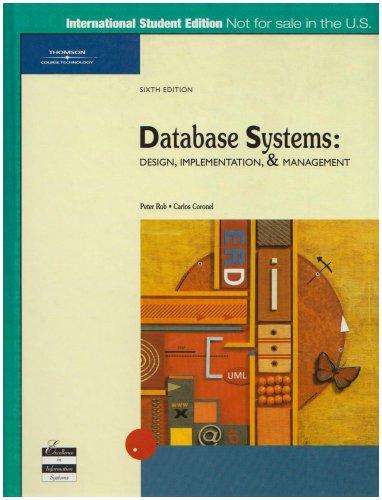Question
CODE IN PYTHON (SCRREN SHOOT RESULT) Math Service via Network You are required to implement a math server and a math client. The behaviors of
CODE IN PYTHON (SCRREN SHOOT RESULT)
Math Service via Network
You are required to implement a math server and a math client. The behaviors of the clients and server in
this project are similar to that of the clients and server in Project 1. The client should allow the user to
continuously issue requests until the user inputs Quit. The differences are:
Users will input some math expression, such as 2 + 3, 2 *3 , 2 + 3 * 4/5, etc., in the client.
The client will send the math expression to the server.
The server will evaluate the result of the received math expression, and send back the final result
back to the requesting client. The result should be sent back as a string. For example, if the server
receives 2 + 3, it will send back 5. If the server receives 2 *3 , it will send back 6.
Basically, instead of sending strings and receiving capitalized strings, the client will send math expressions
and receive the results of the math expressions. You can tell that this project is not very different from
the Project 1. You can potentially reuse some part of your original code.
On the server side, you need some evaluation function to evaluate a math expression. You can implement
your own, or you can use some existing library functions/methods. In either case, your server should
support valid math expressions that involve the four basic operators: +, -, *, and /. The math
expressions can have arbitrary number of spaces/tabs within them, and they should still be regarded as
valid.
Requirements:
1. You are required to implement the
UDP
version. The UDP server should be able to serve multiple
clients at the same time by default, without multi-threading.
2. You are required to implement the
TCP non-persistent
version. The TCP non-persistent server
should be able to serve multiple clients at the same time by default, without multi-threading.
3. You are required to implement the
TCP persistent version without multi-threading
. The TCP
persistent server should be able to serve multiple clients, not necessarily at the same time. That
is, the server should be able to serve one client, and have several other clients pending while it is
serving the first client. When the first client is done (quit gracefully), the server can pick up the
next pending client and serve it; after this client is done, the server can again pick up the next
pending client ant serve it.
4. You are required to submit a
project report
. In your project report, you should include
comprehensive tests to demonstrate that all your programs meet the requirements. For example,
for the UDP version, your testing should show that your server really can serve multiple clients at
the same time. You can include a screenshot with multiple clients concurrently running and
getting the service. Also, show that when a client gracefully quits (by issuing Quit), other clients
can still get the service without a problem, and new clients can come to get the service without a
problem. The project report will have a large weight in terms of grading.
5. You are highly recommended to implement the
TCP persistent version with multi-threading
,
because you are required to implement multi-threading for the group project anyways. The multi-
CSIT 340 Computer Networks
threaded TCP persistent server can serve multiple clients at the same time. You receive 4 bonus
points for implementing the TCP persistent version with multi-threading.
You can implement the project in any programming language you like. Examples on how to implement
multi-threading can be found in the projects folder of Canvas Files:
Java:
MultiThreadDemo.java
and
MultiThreadDemo2.java
Python:
multithread.py
and
multithread2.py
Submission:
7 files are required:
1. UDPMathServer.java/UDPMathServer.py
2. UDPMathClient.java/UDPMathClient.py
3. TCPNonPersistentMathServer.java/TCPNonPersistentMathServer.py
4. TCPNonPersistentMathClient.java/TCPNonPersistentMathClient.py
5. TCPPersistentMathServer.java/TCPPersistentMathServer.py
6. TCPPersistentMathClient.java/TCPPersistentMathClient.py
7. Project Report
If you implement the TCP persistent version with multi-threading, you should submit one additional file:
TCPPersistentMathServerMultithread.java/ TCPPersistentMathServerMultithread.py
The code in TCPPersistentMathClient.java/TCPPersistentMathClient.py should be able to work with
the multi-threaded server without any modification. You should also include tests for the multi-threaded
server in your project report, if you implement it.
Related Resources:
Python 2 multithreading:
http://www.techbeamers.com/python-multithreading-concepts/
https://www.tutorialspoint.com/python/python_multithreading.htm
Python 3 multithreading:
https://www.tutorialspoint.com/python3/python_multithreading.htm
Step by Step Solution
There are 3 Steps involved in it
Step: 1

Get Instant Access to Expert-Tailored Solutions
See step-by-step solutions with expert insights and AI powered tools for academic success
Step: 2

Step: 3

Ace Your Homework with AI
Get the answers you need in no time with our AI-driven, step-by-step assistance
Get Started


